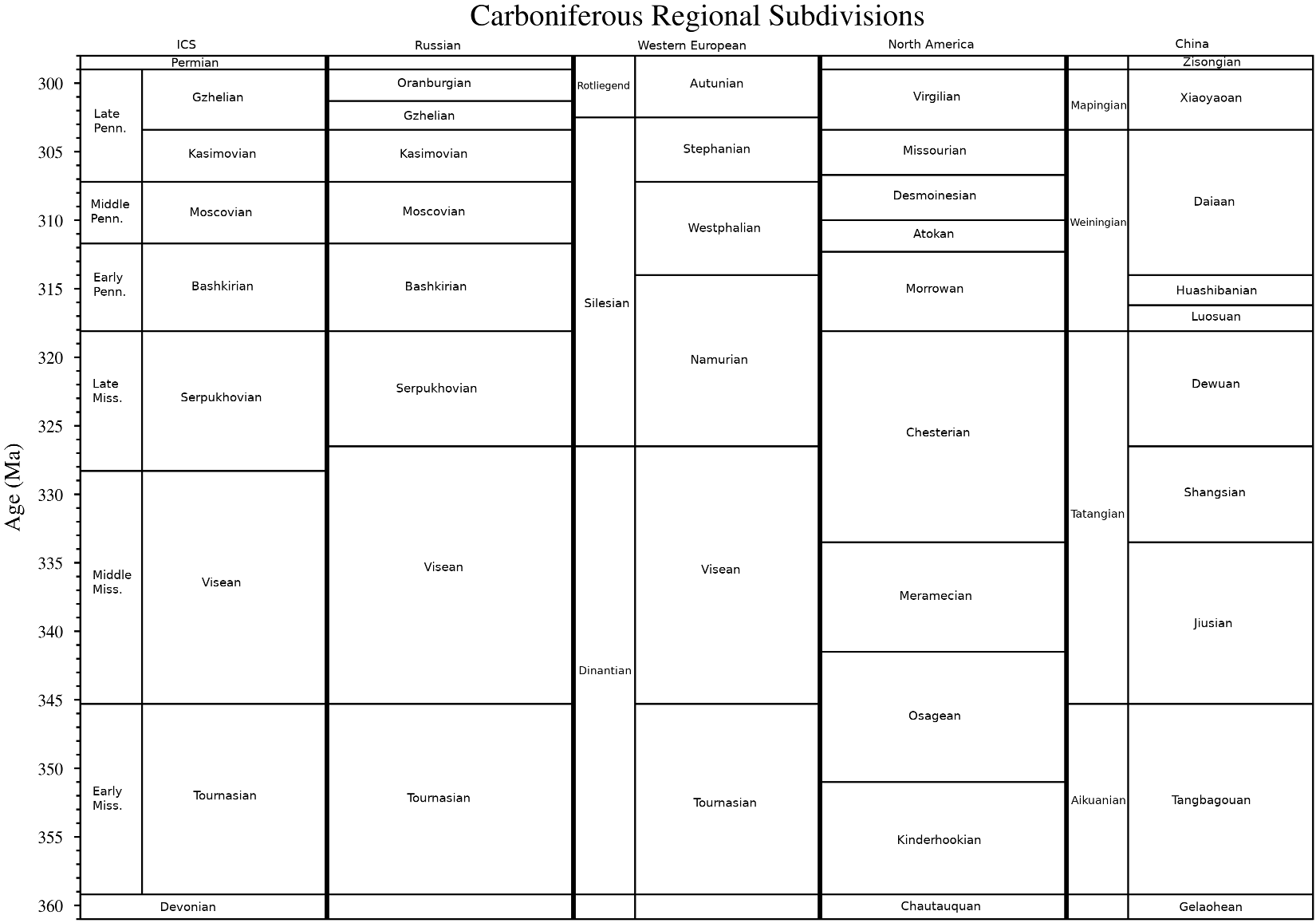|
Pecopteris
''Pecopteris'' is a very common form genus of leaves. Most ''Pecopteris'' leaves and fronds are associated with the marattialean tree fern '' Psaronius''. However, ''Pecopteris''-type foliage also is borne on several filicalean ferns, and at least one seed fern. Pecopteris first appeared in the Devonian period, but flourished in the Carboniferous, especially the Pennsylvanian. Plants bearing these leaves became extinct in the Permian period, due to swamps disappearing and temperatures on Earth dropping. Etymology ''Pecopteris'' is derived from the Greek ''pekin'', (to comb), and ''pteris'', (a fern). This is because the leaflets of ''Pecopteris'' fronds are arranged like the teeth on a comb. Species As of 1997, there have been 250-300 species assigned to ''Pecopteris''. In Brazil, fossil of form genus ''Pecopteris'' was located in outcrop ''Morro Papalé'' in the city of Mariana Pimentel. They are in the geopark Paleorrota in Rio Bonito Formation and date from Sak ... [...More Info...] [...Related Items...] OR: [Wikipedia] [Google] [Baidu] |
Psaronius
''Psaronius'' was a Marattialean tree fern which grew to 10m in height, and is associated with leaves of the organ genus '' Pecopteris'' and other extinct tree ferns. Originally, ''Psaronius'' was a name for the petrified stems, but today the genus is used for the entire tree fern. ''Psaronius'' tree fern fossils are found from the Carboniferous through the Permian. Etymology The word Psaronius comes from the Greek ψαρονιος (''psaronius'', precious stone) the root of which is ψαρον (''psaron'', a starling bird.] The stone was used for ornamental purposes in Europe and acquired the name for its resemblance to the speckled pattern of the starling. In Germany, the stone was called staarstein. And in English, it was called either starry-stone or starling stone. Description Like many extinct trees, psaronius is known by various individual fossil parts that are not always found together. The main parts include: the root mantle, the stem, the fronds, the coziers (fid ... [...More Info...] [...Related Items...] OR: [Wikipedia] [Google] [Baidu] |
Mazon Creek Fossils
The Mazon Creek fossil beds are a conservation ' found near Morris, in Grundy County, Illinois. The fossils are preserved in ironstone concretions, formed approximately in the mid-Pennsylvanian epoch of the Carboniferous period. These concretions frequently preserve both hard and soft tissues of animal and plant materials, as well as many soft-bodied organisms that do not normally fossilize. The quality, quantity and diversity of fossils in the area, known since the mid-nineteenth century, make the Mazon Creek ' important to paleontologists, in attempting to reconstruct the paleoecology of the sites. The locality was declared a National Historic Landmark in 1997.. Geology The Mazon Creek fossils are found in the Upper Carboniferous Francis Creek Shale; the type locality is the Mazon River (or Mazon Creek), a tributary of the Illinois River near Morris, Grundy County, Illinois. The 25 to 30 meters of shale were formed approximately , during the Pennsylvanian period. ... [...More Info...] [...Related Items...] OR: [Wikipedia] [Google] [Baidu] |
Carboniferous
The Carboniferous ( ) is a geologic period and system of the Paleozoic that spans 60 million years from the end of the Devonian Period million years ago (Mya), to the beginning of the Permian Period, million years ago. The name ''Carboniferous'' means "coal-bearing", from the Latin '' carbō'' (" coal") and '' ferō'' ("bear, carry"), and refers to the many coal beds formed globally during that time. The first of the modern 'system' names, it was coined by geologists William Conybeare and William Phillips in 1822, based on a study of the British rock succession. The Carboniferous is often treated in North America as two geological periods, the earlier Mississippian and the later Pennsylvanian. Terrestrial animal life was well established by the Carboniferous Period. Tetrapods (four limbed vertebrates), which had originated from lobe-finned fish during the preceding Devonian, became pentadactylous in and diversified during the Carboniferous, including early amphibian lin ... [...More Info...] [...Related Items...] OR: [Wikipedia] [Google] [Baidu] |
Rio Bonito Formation
The Rio Bonito Formation is a geological formation of the Paraná and Pelotas Basins of Permian age. It is represented by a succession of cyclic sedimentary packages of sandstones, siltstones and shales which bear extensive deposits of coal that has been extracted since the 19th century.White, I.C. (1908) Comissão de Estudos das Minas de Carvão de Pedra do Brazil – Relatório final. (relatório bilíngüe, português e inglês); 617 p. + ilustr.; Imprensa Nacional, Rio de Janeiro, Brasil. IN: CPRM (2008). 30 cm. Edição comemorativa: 100 anos do Relatório White. Edição facsimilar. CDD 553.209816. The Rio Bonito Formation was deposited in a coastal environment, formed by rivers, deltas, bays and estuaries with tidal plains, barrier islands and shallow marine platform, at a time when the Paraná Basin was a large gulf of the ancient supercontinent Gondwana. This gulf was open to the southwest, to the old ocean Panthalassa. The Rio Bonito Formation outcrops occur mainly in ... [...More Info...] [...Related Items...] OR: [Wikipedia] [Google] [Baidu] |
Late Devonian
The Devonian ( ) is a geologic period and system of the Paleozoic era, spanning 60.3 million years from the end of the Silurian, million years ago (Mya), to the beginning of the Carboniferous, Mya. It is named after Devon, England, where rocks from this period were first studied. The first significant adaptive radiation of life on dry land occurred during the Devonian. Free-sporing vascular plants began to spread across dry land, forming extensive forests which covered the continents. By the middle of the Devonian, several groups of plants had evolved leaves and true roots, and by the end of the period the first seed-bearing plants appeared. The arthropod groups of myriapods, arachnids and hexapods also became well-established early in this period, after starting their expansion to land at least from the Ordovician period. Fish reached substantial diversity during this time, leading the Devonian to often be dubbed the Age of Fishes. The placoderms began dominating ... [...More Info...] [...Related Items...] OR: [Wikipedia] [Google] [Baidu] |

